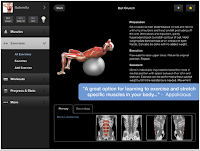
17, 22 Indeed, imaging methods such as MRI and CT are expensive methods and are not accessible to the majority of clinicians and researchers. The availability of DXA systems, with modest scan cost, low radiation exposure, short scan time, and extensive information provided from a whole body scan makes this approach the most widely used in sarcopenia research at the present time. Subsequently, BIA equations were developed to predict muscle mass (instead of FFM). 21 After this phase, CT, MRI, and DXA were being used to measure muscle mass (so a more specific muscle assessment compared with the general FFM). Others that followed Matiegka were limited by a lack of reference standards for skeletal muscle mass measurement until the introduction of CT by Hounsfield.

#Imuscle measure skin
20 Matiegka's method divided body weight into four parts: skeleton, skeletal muscle, skin plus subcutaneous adipose tissue, and the remainder. Matiegka reported in 1921 what was to become a classic anthropometric approach to quantifying skeletal muscle mass. The use of different diagnostic methods may lead to different prevalence of sarcopenia and may therefore have significant consequences on preventive or therapeutic strategies.īody compartments based on reference man. 11, 19 From a clinical and epidemiological point of view, it is important to have a consensual technique. Therefore, the objective measurement of sarcopenia is hampered by limitations intrinsic to assessment tools. 18 Body composition techniques are based on these organizational levels.
#Imuscle measure free
The 2‐compartment model divides the body weight into fat mass and fat free mass or FFM. At the organizational level, the body can be separated into chemical or anatomical distinct compartments. total body muscle mass, appendicular muscle mass, or mid‐thigh muscle cross‐sectional area) (Figure 1). Each rely on different technologies and assess different aspects of muscle mass (e.g.

15, 16, 17 In addition to these, several emerging techniques for the assessment of muscle mass are now available. In recent years, four main techniques have been commonly used to estimate muscle mass: bioelectric impedance (BIA), dual energy X‐ray absorptiometry (DXA), computed tomography (CT), and magnetic resonance imaging (MRI) to replace anthropometry. 13, 14 Currently, all the proposed definitions include the measurement of muscle mass but the techniques used to assess it vary. 11, 12 Therefore, valid, standardized, reliable, accurate, and cost‐effective tools are necessary for the identification of sarcopenia. The multidimensional nature of sarcopenia implies that its domains should be objectively assessed. In turning a conceptual definition to an operational definition, several have been proposed, 2, 3, 4, 5, 6, 7, 8, 9, 10 but no consensus has yet been reached.

2 Since then, the conceptual definition of sarcopenia has expanded to include impaired muscle strength and/or physical performance. Baumgartner, defined sarcopenia as appendicular skeletal muscle mass (kilogram)/height 2(metre 2) being less than two standard deviations below the mean of a reference group. in 1989 1 to refer to a progressive loss of skeletal muscle mass with advancing age. The term sarcopenia was first used by Rosenberg et al.


 0 kommentar(er)
0 kommentar(er)
